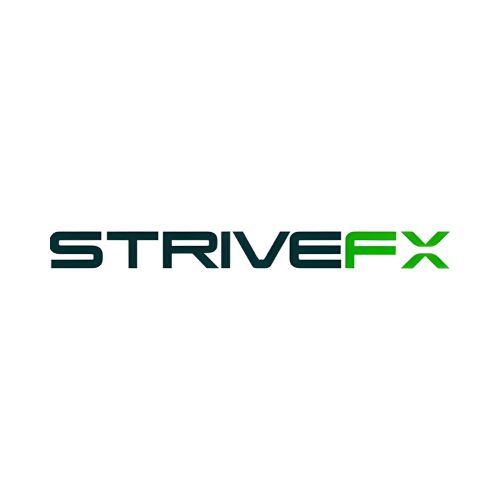Proprietary trading, or “prop trading,” has rapidly transformed from a niche institutional practice into a mainstream business model for brokers, fintech entrepreneurs, and even individual traders. With minimal regulatory overhead and scalable tech solutions, starting a prop trading firm is now more accessible and profitable than ever. This guide will walk you through every essential step of launching your own prop firm — from legal setup to platform design and marketing strategies.
What is a Prop Trading Firm?
A proprietary trading firm is a company that allows traders to trade financial instruments using the firm’s capital. Instead of trading their own money, traders pass an evaluation challenge to prove their skills. Once funded, they trade under strict risk management rules and split profits with the firm.
Unlike traditional brokerages, prop firms don’t handle client deposits. They generate revenue through challenge fees, subscriptions, and performance-based profit sharing. This structure reduces regulatory burdens while enabling scalable, low-risk business models for firm owners.
There are two main models:
-
Retail Prop Firms: Offer simulated evaluations and real funding based on strict criteria.
-
Institutional Prop Firms: Operate with tighter oversight, often dealing directly in high-frequency or large-scale trading.
Why Starting a Prop Firm is a Lucrative Opportunity in 2025
Retail prop trading has exploded in popularity due to tightened CFD regulations and growing dissatisfaction with traditional brokerage models. This presents a unique market gap — traders are seeking funding opportunities, and entrepreneurs can meet that demand without the complexity of holding client funds.
Key drivers of profitability in 2025 include:
-
Recurring revenue from challenge fees and re-evaluations
-
Low operational risk due to demo trading environments
-
High trader demand for alternative career paths without personal capital risk
-
Minimal licensing requirements in most jurisdictions
Additionally, prop trading firms can scale quickly with minimal overhead. Automation through CRMs, integrated risk engines, and platform analytics means one small team can manage thousands of traders globally.
Business Plan Essentials
Starting a prop firm begins with building a clear, structured business plan. This plan should detail:
-
Niche & Focus: Forex-only? Multi-asset? Futures? Crypto-only? Decide based on target traders and regulatory ease.
-
Revenue Model: Will you charge one-time evaluation fees, monthly subscriptions, or both?
-
Trader Profile: Define your ideal user. Are you attracting beginners, intermediate, or elite traders?
-
KPIs: Determine key performance metrics such as challenge pass rate, client LTV (lifetime value), churn rate, and average time-to-funding.
Your business plan should also factor in:
-
Expected tech costs
-
Legal and jurisdictional risks
-
Partner integrations (e.g., CRM, liquidity providers)
-
Support and compliance staffing
Without this foundational roadmap, you risk building a platform that fails to attract the right traders or sustain long-term profitability.
Technology Stack
Your technology stack is the engine of your prop trading firm. It determines how traders interact with your platform, how you manage evaluations, and how efficiently your team can scale operations. Without a reliable and flexible platform, even the best business model will fail to deliver results.
At minimum, your prop firm tech stack should include:
-
A prop trading platform that supports demo challenges, real-time tracking, and scaling logic
-
Trader dashboards to show performance metrics, risk limits, and challenge status
-
A CRM system to handle customer data, communications, and onboarding
-
KYC integration for verifying trader identities
-
Payment processors including credit cards, crypto, and local gateways
-
Optional: copy trading tools, API access, and advanced analytics
Prop firm solutions like YourPropFirm offer turnkey options for entrepreneurs who want fast market entry. These platforms allow full customization of evaluation rules, drawdown settings, and payout structures, so you can tailor the trader experience to your brand.
If your firm wins trust through a professional interface and seamless backend processes, traders are more likely to pass evaluations, stick around, and refer others.
Legal and Regulatory Aspects
One of the major appeals of starting a prop firm is the light regulatory burden. Unlike brokerages that must manage client funds, most prop firms operate in a legal grey zone. This is because they offer simulated trading challenges rather than direct access to real capital.
However, this does not mean you can skip legal precautions. Your business still needs to:
-
Be registered as a legal entity in a favorable jurisdiction
-
Draft terms and conditions that clearly define challenge rules, payouts, and trader obligations
-
Implement AML and KYC protocols to reduce fraud risk
-
Consult legal professionals for jurisdiction-specific requirements, especially if targeting US or EU traders
Avoid using language that implies direct investment, portfolio management, or brokerage services. Keep your offerings within the “evaluation service” category to reduce the risk of regulatory scrutiny.
In 2024, regulatory bodies such as the CFTC and OSC began reviewing some firms for deceptive practices. To stay safe, transparency and compliance should be baked into your operations from day one.
Liquidity Providers and Brokerage Partners
Even though most prop trading is done in simulated environments, integrating real market conditions is essential for credibility and trader development. This is where liquidity providers and brokerage partnerships come in.
A liquidity provider ensures your platform mimics actual spreads, execution speeds, and market depth. For firms offering funded accounts or mirror trading, real liquidity integration becomes even more important.
Here is what to look for in a liquidity partner:
-
Wide coverage across asset classes (forex, indices, crypto, commodities)
-
Fast execution and tight spreads
-
Transparent fee structures and uptime guarantees
-
Option to white-label execution environments or use API bridges with existing brokers
Some firms choose to remain simulation-only forever, while others transition to real trade replication once traders are funded. If you plan to grow toward real-money trading in the future, having a broker partner from the start is a smart move.
Also consider legal partnerships or introductions with brokerage firms that can provide infrastructure or additional licensing support as your business expands globally.
Creating Trading Challenges
The core product of any prop trading firm is the trading challenge. This is how you evaluate the skills of your traders before allocating capital. A well-designed challenge filters out high-risk traders while providing a fair and motivating environment for serious participants.
Here are the key components of an effective challenge:
-
Profit targets: Common ranges are 5 to 10 percent within a fixed period.
-
Drawdown limits: Typically 5 percent daily or 10 percent overall to control risk.
-
Trading duration: Many firms set a 30-day period, though some offer instant funding or multi-phase options.
-
Allowed assets: Define whether traders can access forex, crypto, stocks, or commodities.
-
Rules on news trading, lot sizing, and strategy types: Make expectations clear from the beginning.
You can also offer a second phase or verification stage, where the trader proves consistency before receiving funding.
Your challenge structure should strike a balance between strict enough to protect your capital and fair enough to attract skilled traders. Use automation to track metrics in real-time and provide traders with feedback dashboards to boost engagement.
A scalable challenge system is not just a risk control tool. It is also your main revenue engine, especially if you charge for retries and offer monthly resets.
Risk Management Framework
Risk management is what separates sustainable prop firms from those that burn out quickly. Even if your traders are on demo accounts, you are still exposing your business to operational, reputational, and financial risks.
Your risk controls should be embedded directly into your platform. These can include:
-
Maximum daily loss limits
-
Overall drawdown caps
-
Stop-loss enforcement rules
-
Position sizing limits based on account size
-
Leverage restrictions depending on the asset class
You can also build in auto-liquidation systems, which immediately close a trader’s positions once thresholds are breached.
For firms offering real funding or replicating trades, server-side risk mirroring is essential. This ensures that only traders who follow strict risk rules have their trades forwarded to live markets.
The goal is to create an environment where both the trader and the firm can win. This means controlling losses without limiting a trader’s potential to perform.
Funding Model and Costs
One of the biggest questions new founders have is, “How much capital do I need to start a prop firm?” The answer depends on your business model, whether you offer real capital trading or simulation-only services.
Here’s a basic breakdown of expected costs:
One-time setup:
-
White-label platform: $5,000 to $15,000+
-
Website & branding: $2,000 to $5,000
-
Legal consulting & registration: $3,000 to $10,000
Monthly operations:
-
Licensing & platform fees: $1,000 to $5,000
-
CRM, email, and support tools: $500 to $2,000
-
Payment processing fees: Variable
-
Marketing budget: Depends on growth goals
-
Team salaries or freelance costs: Depends on size
You can start a simulation-only firm for as little as $15,000, but a more competitive firm with automation, tech support, and global reach will require $50,000 to $100,000 in startup capital.
If you plan to fund traders with real capital, factor in liquidity costs and reserve funding for scaling accounts.
Marketing and Client Acquisition
To build a successful prop trading firm, you must attract the right traders at scale. Unlike traditional brokerages that cast a wide net, prop firms can focus on a highly specific audience: skilled retail traders looking for funding.
Effective marketing strategies include:
-
Performance marketing: Run ads on Google, YouTube, and social media targeting “get funded to trade” or “prop trading challenge” keywords.
-
Affiliate programs: Recruit influencers or YouTubers who already have trading audiences.
-
Referral bonuses: Offer existing traders discounts or cash for referring friends.
-
Content marketing: Publish trader case studies, challenge walkthroughs, and prop firm comparisons.
-
Webinars and interviews: Build brand credibility with educational content and expert guests.
Your messaging should clearly communicate:
-
The rules and benefits of your challenge
-
The credibility of your technology and risk controls
-
The real funding opportunity for successful traders
Retargeting, email automation, and customer support chat can all boost conversion rates. Once you acquire a trader, focus on keeping them engaged with leaderboards, scaling options, and ongoing incentives.
Operations and Scaling
Launching a prop firm is only the beginning. To scale sustainably, you need operational systems that allow you to serve thousands of traders without overwhelming your team.
Key operational areas to address:
-
Support system: Implement 24/7 ticketing or chatbot support to handle trader inquiries.
-
Automation: Use scripts and CRMs to manage account creation, challenge monitoring, and payouts.
-
Trader evaluations: Set up automatic metrics tracking for pass/fail decisions.
-
Payments: Offer multiple global gateways for signups and payouts.
-
Security: Monitor platform integrity, prevent abuse (e.g. copy bots), and ensure KYC compliance.
Hire or outsource for key functions such as legal, tech, and customer service as you grow. You may start with one part-time assistant, but by the time you’re managing thousands of accounts, you’ll need a reliable team.
Scaling also includes geographic expansion. Translate your platform and support materials for major trading regions like LATAM, Southeast Asia, and Europe to increase your reach.
Profitability and Pitfalls
Prop firms are profitable when they attract high-volume traders and manage risk properly. The most successful firms generate consistent income from:
-
Evaluation challenge fees
-
Subscription models
-
Challenge retries
-
Profit share from funded traders
However, there are also risks. Common pitfalls include:
-
High refund rates due to vague challenge rules or poor user experience
-
Regulatory issues from misclassifying services
-
Overfunding traders without proper risk controls
-
Burnout from trying to manage everything manually
To stay profitable, monitor KPIs like challenge completion rates, LTV, churn, and support volume. Use that data to optimize both your offering and backend systems.
A good prop firm knows that trader success and firm success are intertwined. The more your traders win within your structured environment, the more revenue you generate — and the better your brand reputation becomes.
Conclusion
Starting a prop trading firm in 2025 offers one of the most scalable, low-barrier opportunities in the financial services world. With the right strategy, technology stack, and risk controls, you can create a business that consistently generates revenue while empowering traders around the world.
Remember, success in this space comes from balancing three things:
-
Clarity in rules and expectations
-
Trustworthy tech and automation
-
Support for skilled traders looking to grow
Whether you’re starting from scratch or expanding an existing brokerage, now is the ideal time to claim your space in this fast-evolving market.
If you’re searching for the most trusted technology partner to power your platform, check out our comparison of the Best Prop Firm Tech Providers — where YourPropFirm took the 2025 award for best-in-class solutions.
FAQ
How much does it cost to start a prop firm?
A basic setup can begin at $15,000 with white-label technology and minimal infrastructure. A scalable, globally competitive prop firm may require $50,000 to $100,000 depending on your tech and marketing plans.
Is prop trading regulated?
In most regions, prop trading remains lightly regulated since firms do not handle client funds. However, legal compliance with business registration, KYC, and AML rules is still required.
Do I need a license to run a prop firm?
You do not need a brokerage license if you’re operating in a simulation-only model. However, check with legal experts in your jurisdiction to avoid regulatory missteps.
How do prop firms make money?
Most revenue comes from challenge entry fees, re-evaluation payments, monthly subscriptions, and profit splits from funded traders.
What makes a prop firm profitable long-term?
Solid risk management, fair but challenging evaluation rules, seamless technology, and consistent trader acquisition through marketing and community building.






